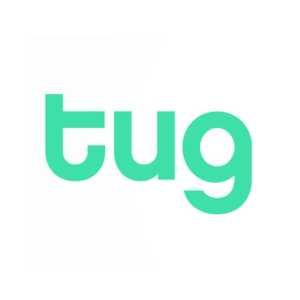
Three Link Building Tactics to Improve Your Link Profile

Backlinks are one of the most important search ranking factors. According to a search study by Ahrefs, there is a clear correlation between the amount of backlinks a site has and the amount of organic traffic driving to the site explains Maria Lind, one of Tug’s SEO executives.
Therefore, link building should be an integrated part within most businesses’ SEO strategies. At Tug we believe in a multi-level strategy and we’re constantly working on different tactics to keep improving our client’s link profiles. Increasing backlinks from high-quality sites offers you the opportunity to become a reputable and trusted site. Let’s start out with some straightforward, but sometimes forgotten strategies to drive links to your site. Here are three tactics to start link building without having to create new assets and content.
1. Turning your brand mentions into links
A good place to start is by finding mentions of your brand on published websites where a link has not yet been included. Every reference related to your brand (in a positive light) has the opportunity to gain a link. Brand mentions might include a mention of your CEO providing an expert opinion, a study you’ve conducted, or your products being recommended.
Depending on how reputable your brand is, this could open up thousands of new link opportunities. Since the site is already recognising your brand, they have decided that mentioning you would provide value to their content and audience. This puts you in an advantageous position to ask for that all-important link.
Helpful tools to find your unlinked Brand mentions:
There are lots of SEO competitor tools to identify unlinked brand mentions. My personal tool of choice is Ahrefs Content Explorer.
The research requires you to search and identify different variations and abbreviations of your brand. Also consider if there are other alternative ways of spelling your brand.
Additionally, try searching for well-known people in your company. It could either be the CEO or any other experts that might appear in the media.
In addition to using Ahrefs, Google is a great tool for finding additional opportunities in your research. Be creative in your search to find your brand mentioned in different context. For example, are there any past collaborations that might have been recognised in the media or are there any old or new PR campaigns to search for?
2. Competitor link replication
Before utilising this tactic, you need to establish who your competitors are. This includes both your business competitors, as well as competitors performing well for the keywords you want to rank for.
If your competitors are ranking highly for similar keywords to yours, they probably have an extensive backlink profile. However, this does not necessarily have to be a bad thing. We can utilise these backlinks to our advantage.
We call this strategy Competitor Link Replication. The tactic enables you to identify content on published sites where main competitors are being mentioned, and where it would be relevant to include a link to your site as an additional resource.
Tools and tactics to find the competitor link replication you need:
To identify competitor link replications, my tool of choice is either Majestic or Ahrefs. If you have access to different SEO competitor tools, I would recommend utilising more than one to get the most out of your research.
The next step is uncovering potential link opportunities by analysing your main competitors’ existing backlinks.
To determine a relevant link opportunity, you have to ask yourself the question, why did they mention the competitor and not us? You can easily determine this by looking at the page title, anchor text and surrounding text. This helps you understand the context of the link placement and if your site is relevant enough for you to get in contact and ask to be included.
3. Resource link building
Resource link building means identifying pages where your site would be relevant to add as a resource. This tactic is often associated with online resource lists. However, I would say that this tactic is applicable to any content where your site would be relevant as a resource within a certain topic – not exclusively resource lists.
How to find Resource Link Opportunities?
To find resource link building opportunities, I use Google as my research tool.
Identify topics and keywords associated with your brand or products/services. For example, let’s say you’re a coupon site. Suitable search queries could be around 'How to save money', 'Money saving sites', or 'How to find the best deals'. The search will provide you with a list of content opportunities where your site could be a potential resource.
Additionally, identify other useful resources on your site. This helps specify your searches and expand on the opportunities you can go after. Say for example, that your coupon site offers deals for hotels and travel. This enables you to narrow down the search and find content on specific travel and money-saving queries. The aim is to identify opportunities where you believe your resource will strengthen and add value to the existing content.
These are only a few of lots of different tactics to acquire links to your site. Link building is not easy, however, these basic tactics enable you to start identifying quick wins and driving those important links to your site.









